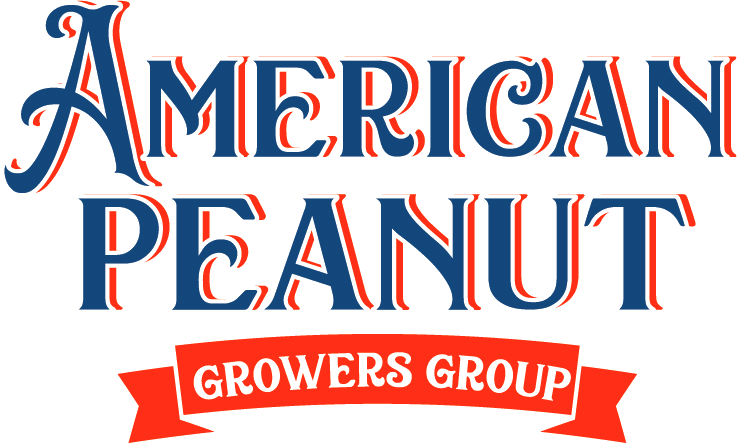 During the final stop on the Georgia Peanut Tour attendees were able to tour the grower-owned peanut processing facility, American Peanut Growers Group, which is based in Donalsonville, Georgia. Throughout the tour, attendees were able to visit the buying point, shelling plant, blancher and learn more about APGG’s new peanut ingredient processing facility. APGG was formed in late 2002 and the company includes two buying points, two shelling plants, one blancher, one cold storage facility, multiple warehouses, a feed mill, a solar field for renewable energy and their newest venture, a ready-to-eat peanut ingredient facility.
During the final stop on the Georgia Peanut Tour attendees were able to tour the grower-owned peanut processing facility, American Peanut Growers Group, which is based in Donalsonville, Georgia. Throughout the tour, attendees were able to visit the buying point, shelling plant, blancher and learn more about APGG’s new peanut ingredient processing facility. APGG was formed in late 2002 and the company includes two buying points, two shelling plants, one blancher, one cold storage facility, multiple warehouses, a feed mill, a solar field for renewable energy and their newest venture, a ready-to-eat peanut ingredient facility.
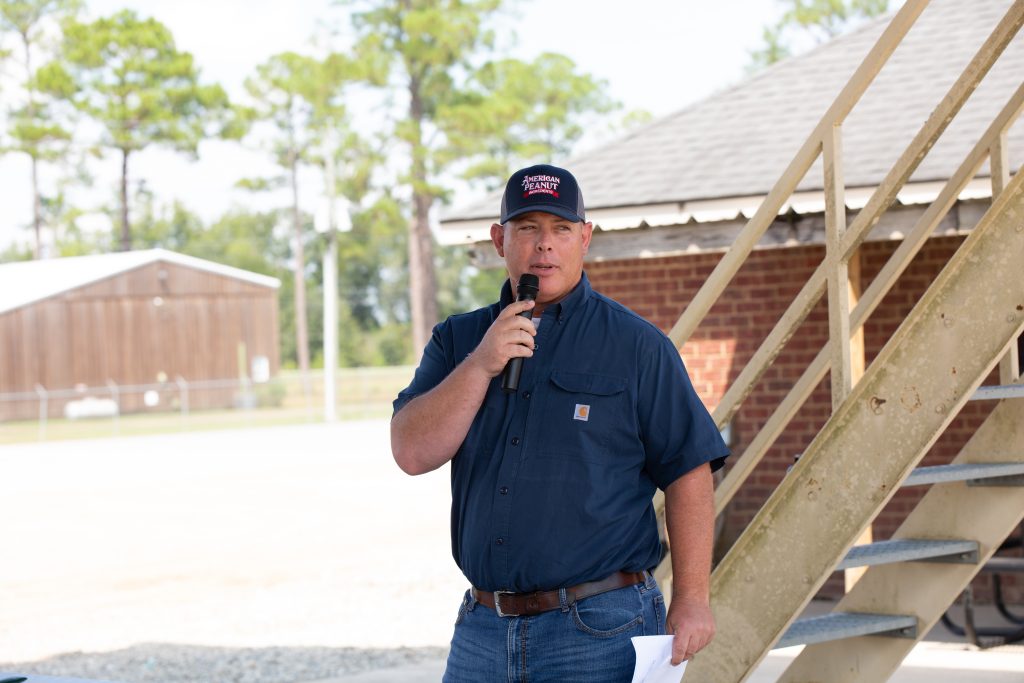 Neal Flannagen, president and CEO of APGG, welcomed attendees to APGG and provided an overview of the facility. The first step of the process includes peanuts arriving to APGG from the farm. APGG currently processes 80,000 tons of farmer stock peanuts at their buying point.
Neal Flannagen, president and CEO of APGG, welcomed attendees to APGG and provided an overview of the facility. The first step of the process includes peanuts arriving to APGG from the farm. APGG currently processes 80,000 tons of farmer stock peanuts at their buying point.
When peanuts first arrive their moisture level is checked. If the moisture level is not below 10.49 percent, then the peanuts are sent to the drying shed. Once peanuts are dried, they are cleaned if needed and then they are inspected and graded by the Georgia Federal-State Inspection Service. Then the peanuts are stored in a warehouse on-site at APGG until they are needed.
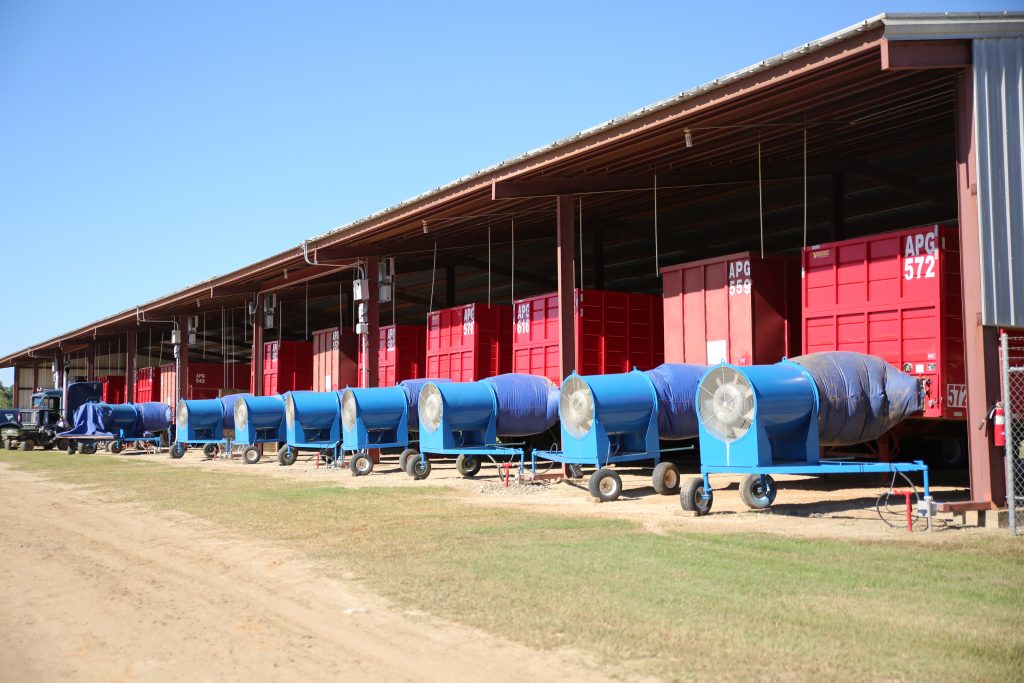
APGG sells raw and blanched peanuts to all major peanut product manufacturers in the U.S. and many companies worldwide. APGG offers bulk packaging to their customers through rail cars or semi-trucks. Additionally, APGG exports peanuts to customers in South America, Europe and Asia, through the port of Savannah, Georgia, which is one of the busiest ports on the east coast of the United States.
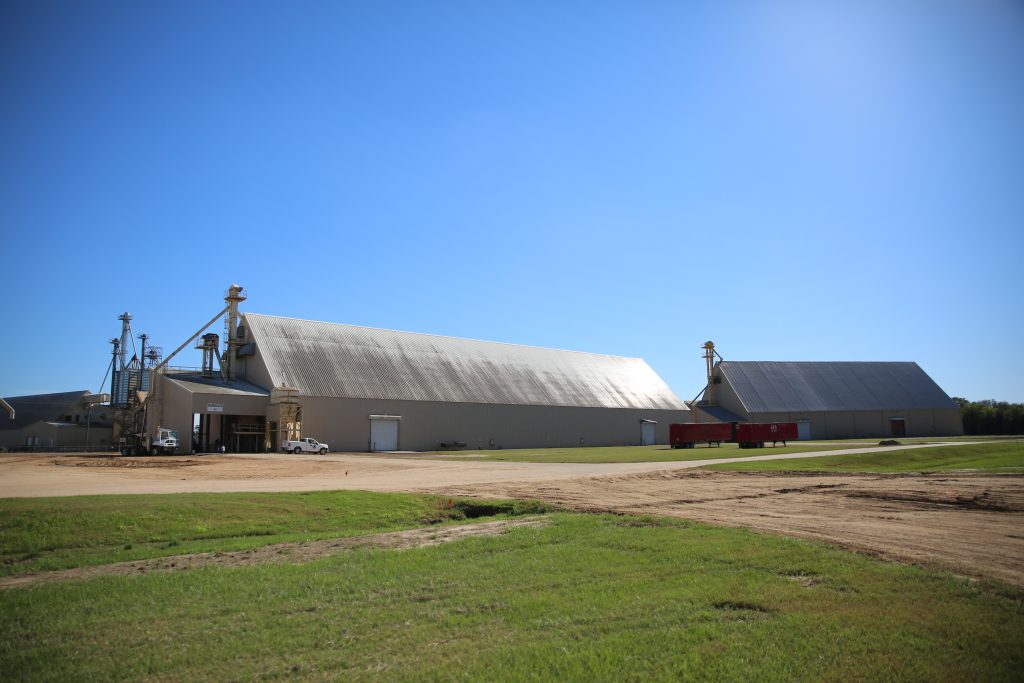
APGG has the ability to roast 20,000 pounds of peanuts per hour. After roasting they temper the peanuts for six to eight hours before shipping. Peanuts can also go to the blancher where the red skin is removed. The blanched peanuts are sorted by size, splits are removed, and orders are shipped based on customer specifications.
In 2022, APGG began their newest venture with the creation of the American Peanut Ingredients, LLC (API). The new 140,000 square-foot facility includes an additional shelling plant and a ready-to-eat peanut ingredient plant. The new venture allows API the ability to sale peanut butter in bulk, peanut paste or as a granule.
One unique thing about the grower owners of APGG is that they have a higher percentage of irrigated land than the state average for Georgia. All of the APGG farmer members are excellent growers who deliver exceptional quality and high yields to APGG’s shelling plants.
For more information on APGG visit their website at www.apgg.com.
View the 2023 Georgia Peanut Tour Photo Album
 The thirty-seventh annual Georgia Peanut Tour will be held September 16-18, 2025, in Valdosta, Georgia, and the surrounding area. The tour brings the latest information on peanuts while giving a first-hand view of industry infrastructure from production and handling to processing and utilization. Tour stops will be made in several peanut producing counties in South Georgia.
The thirty-seventh annual Georgia Peanut Tour will be held September 16-18, 2025, in Valdosta, Georgia, and the surrounding area. The tour brings the latest information on peanuts while giving a first-hand view of industry infrastructure from production and handling to processing and utilization. Tour stops will be made in several peanut producing counties in South Georgia.
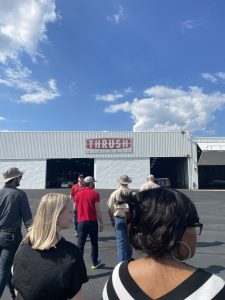


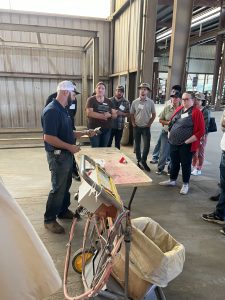
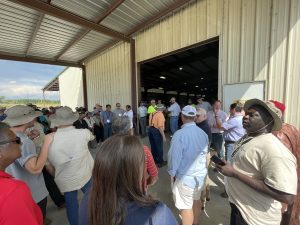
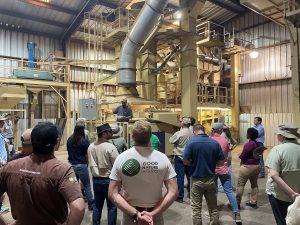 Georgia Seed Development is responsible for overseeing the foundation plant material production in Georgia. As a nonprofit, self-supporting organization, GSD provides economic support for new business opportunities that help keep agriculture as Georgia’s No. 1 industry. This effort has resulted in more than $15 million of additional support for University of Georgia cultivar development since 1997.
Georgia Seed Development is responsible for overseeing the foundation plant material production in Georgia. As a nonprofit, self-supporting organization, GSD provides economic support for new business opportunities that help keep agriculture as Georgia’s No. 1 industry. This effort has resulted in more than $15 million of additional support for University of Georgia cultivar development since 1997.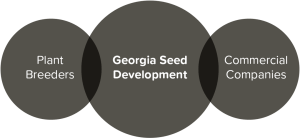
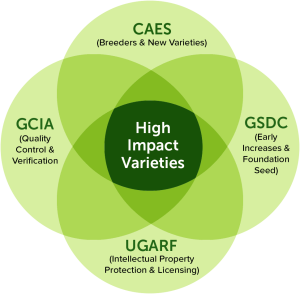
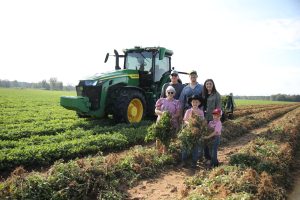
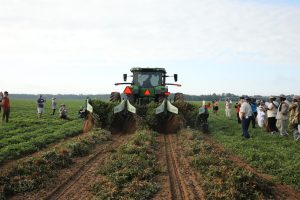 The field was planted behind a cover crop of black oats and radish. Riley strip tilled the peanuts in at planting. Throughout the season, Riley has an issues with drought in the dry corners of the field where the irrigation does not apply water to the crop. He has also had issues with spider mites which thrive in dry conditions.
The field was planted behind a cover crop of black oats and radish. Riley strip tilled the peanuts in at planting. Throughout the season, Riley has an issues with drought in the dry corners of the field where the irrigation does not apply water to the crop. He has also had issues with spider mites which thrive in dry conditions.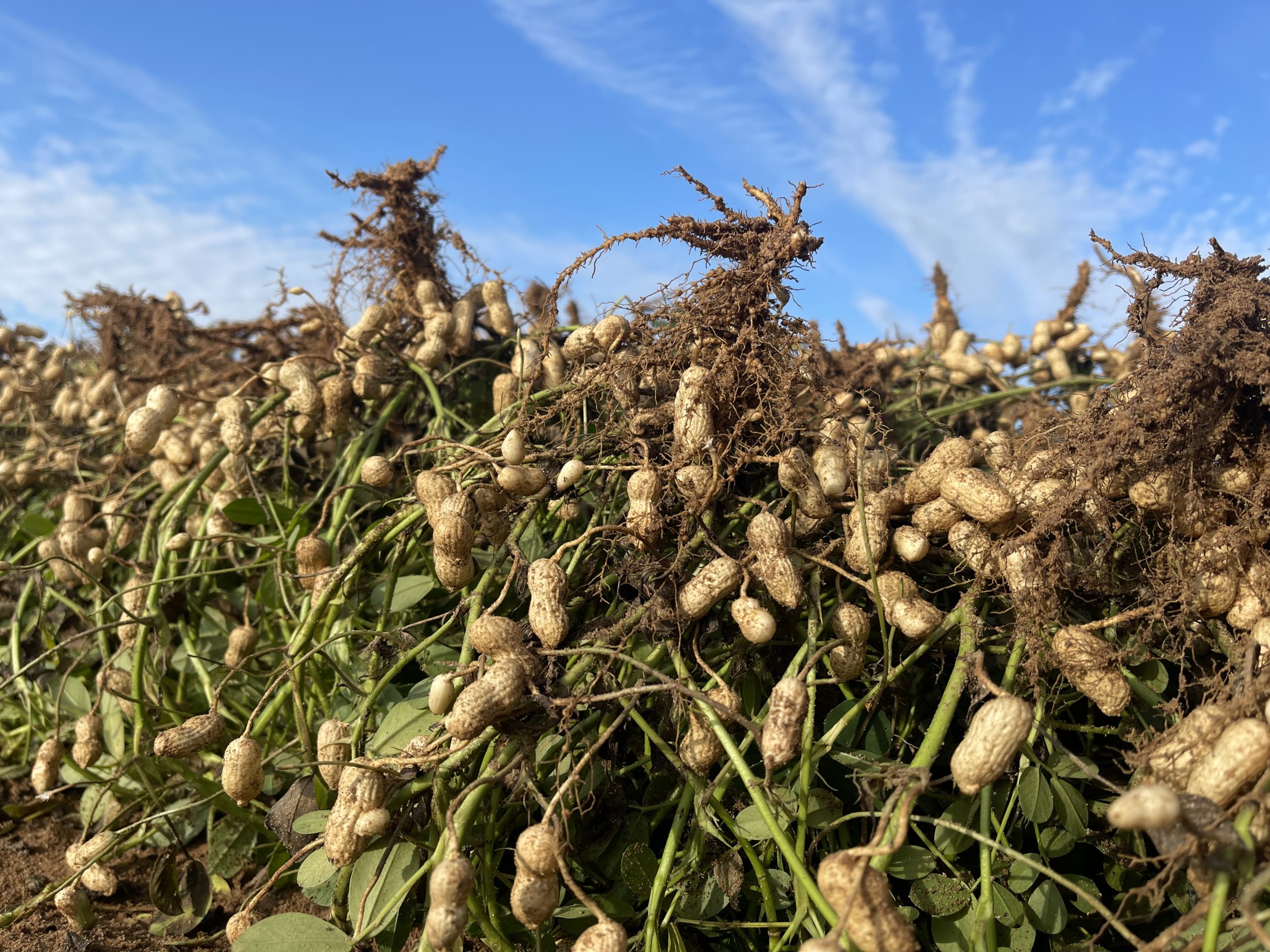
 We are delighted to welcome you to the 2024 Georgia Peanut Tour and thank you for your participation. Whether you’re joining us for the first time or you’re a seasoned “Peanut Tour Veteran,” we are thrilled to have you on our 36th tour. As in previous years, you’ll gain an in-depth look at the production of one of Georgia’s key agricultural crops. We hope this experience will provide you with a deeper understanding of both the challenges faced by our farmers and the reasons we proudly declare that Georgia grows the best peanuts in the world. Our goal is for you to develop a greater appreciation for the rich heritage of peanut farming in our state. Those involved in the peanut industry—farmers, buyers, processors, researchers, Extension personnel, and Georgia Peanut Commission representatives—take great pride in Georgia’s position as the leading peanut-producing state in the U.S., and we’re excited to showcase this year’s crop to you.
We are delighted to welcome you to the 2024 Georgia Peanut Tour and thank you for your participation. Whether you’re joining us for the first time or you’re a seasoned “Peanut Tour Veteran,” we are thrilled to have you on our 36th tour. As in previous years, you’ll gain an in-depth look at the production of one of Georgia’s key agricultural crops. We hope this experience will provide you with a deeper understanding of both the challenges faced by our farmers and the reasons we proudly declare that Georgia grows the best peanuts in the world. Our goal is for you to develop a greater appreciation for the rich heritage of peanut farming in our state. Those involved in the peanut industry—farmers, buyers, processors, researchers, Extension personnel, and Georgia Peanut Commission representatives—take great pride in Georgia’s position as the leading peanut-producing state in the U.S., and we’re excited to showcase this year’s crop to you. The thirty-sixth annual Georgia Peanut Tour will be held September 17-19, 2024, in Americus, Georgia, and the surrounding area. The tour brings the latest information on peanuts while giving a first-hand view of industry infrastructure from production and handling to processing and utilization. Tour stops will be made in several peanut producing counties in South Georgia.
The thirty-sixth annual Georgia Peanut Tour will be held September 17-19, 2024, in Americus, Georgia, and the surrounding area. The tour brings the latest information on peanuts while giving a first-hand view of industry infrastructure from production and handling to processing and utilization. Tour stops will be made in several peanut producing counties in South Georgia. During the final stop on the Georgia Peanut Tour attendees were able to tour the grower-owned peanut processing facility,
During the final stop on the Georgia Peanut Tour attendees were able to tour the grower-owned peanut processing facility,  Neal Flannagen, president and CEO of APGG, welcomed attendees to APGG and provided an overview of the facility. The first step of the process includes peanuts arriving to APGG from the farm. APGG currently processes 80,000 tons of farmer stock peanuts at their buying point.
Neal Flannagen, president and CEO of APGG, welcomed attendees to APGG and provided an overview of the facility. The first step of the process includes peanuts arriving to APGG from the farm. APGG currently processes 80,000 tons of farmer stock peanuts at their buying point.
